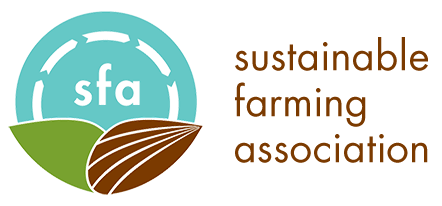Luhman: Overhead

I’ve written several columns talking about different ways to increase profitability in a grazing enterprise. Many have been focused on changing enterprises or working on adding value to the product you sell. You can check those out in my article archive here. Today I want to talk about overhead and how we can reduce that expense.
First of all, what is overhead? When I talk about overhead, I am referring to expenses that can’t be connected to a specific unit of production. These are also known as fixed costs, but I prefer the term overhead, as fixed costs implies that they can’t be reduced. Examples of overhead would be things like labor, equipment or land rent. They differ from direct costs like winter hay for example. With hay, if you reduce your herd by one animal, the hay costs reduce proportionately. However, if you reduce your herd by one, you don’t get to reduce labor, or sell that same portion of a tractor.
When we talk about reducing overhead, essentially we are talking about doing more with the same labor, equipment and land that we have or doing the same with less labor, equipment and land. This seems simple, and maybe even obvious. I’ve heard in the past people say that this is obvious and that every farmer is always trying to do this. But have you really looked at your equipment lineup and asked “can we make do without something?” Or, “is there work we are doing that we could do a different way to reduce labor?”
I think for most of us, there will always be a way to do that. Others may say that all of their equipment is paid for and they do the work so there isn’t any equipment or labor cost. And you may be right, there is not a cash expense associated with those things. However, we must charge an opportunity cost to our equity as it has the ability to generate income elsewhere.
To illustrate this I want to share an example of some changes we have made on our farm to improve the profitability of our business. In the past couple of years we have sold three tractors and a hay baler that brought an additional $134,000 in cash. This was used to purchase a rental property that generates over $12,000/year in cash flow. By selling the baler, we freed up the tractor that was hooked up to the baler all summer and the labor that sat in that tractor. And because of other changes we have made like grazing cornstalks late into winter, we have vastly reduced our need for hay altogether.
Selling the three tractors hasn’t limited our ability to do our job. We may spend a few more minutes per day switching implements, but we can still get all the work done. So while managing to do the same work, we increased cash flow by $12,000/year–or probably even greater when you consider the repairs, maintenance, and depreciation happening with those pieces of equipment, and even further when you consider the appreciation happening on the house.
Labor is a tough one, but it is important to think about how we can work more efficiently or eliminate work altogether to reduce our labor overheads. For many, hiring things done by custom operators up will eliminate equipment overhead and labor overheads. Another example is to combine herds and run them together rather than many separate herds that each must be checked and moved separately.
The point is that there are often many ways we can reduce overheads in our operation, and these can have a large impact on net profitability!
